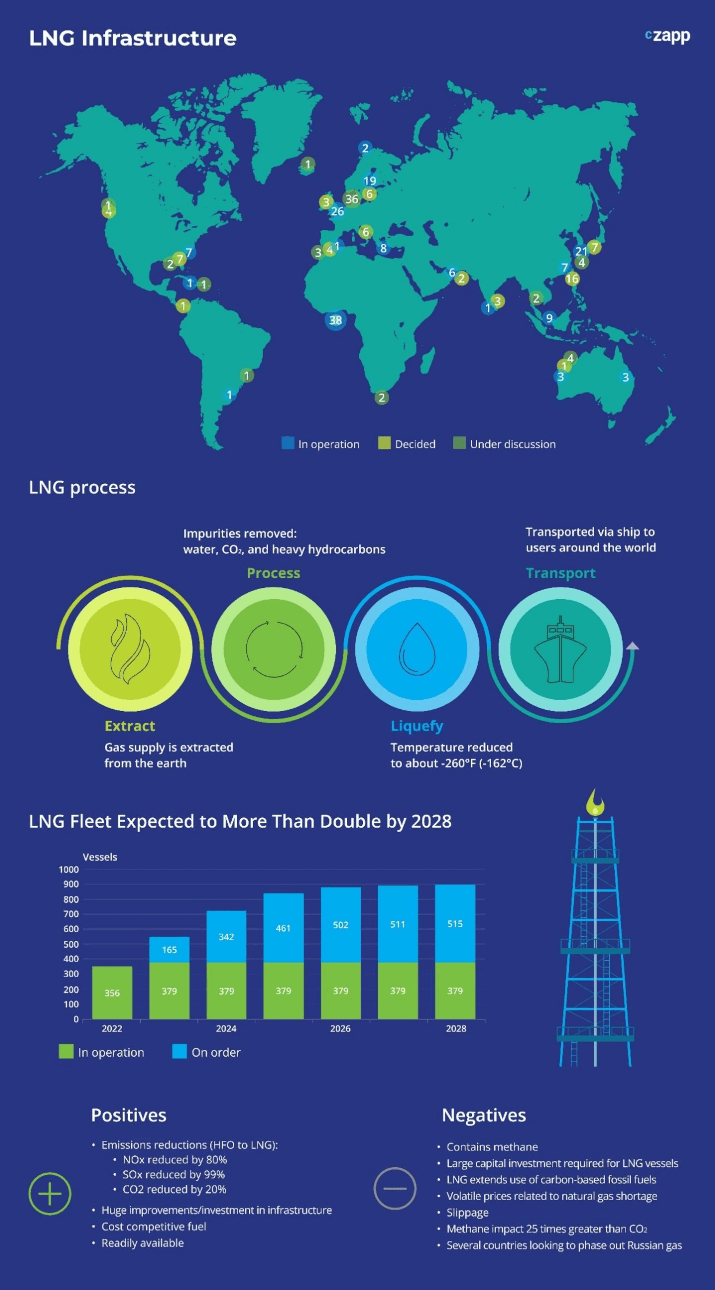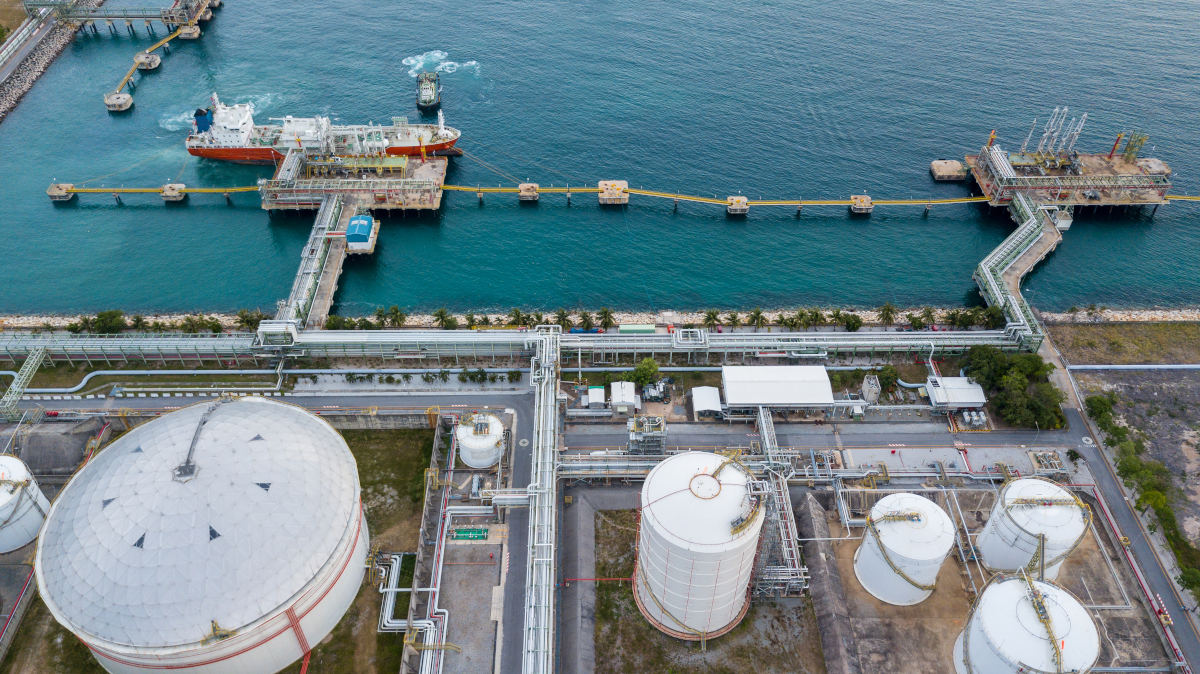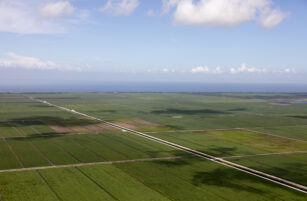Insight Focus
- The shipping industry currently uses about 300 million tonnes of fossil fuels.
- Something must change if the industry is to meet its strict environmental targets.
- In this series, we examine the main contenders and how market share could expand.
LNG
LNG is probably the most advanced alternative fuel with the largest uptake so far. However, production of LNG still requires natural gas, meaning the industry is not really moving away from fossil fuels. LNG is probably the best option as a transition fuel, given that it reduces emissions and particulate matter compared with fuel oil. Read more about the characteristics of LNG as an alternative fuel here.

Methanol
Methanol’s emissions reduction potential for the shipping industry is impressive. Although the existing methanol fleet is relatively small, penetration is growing, especially among the container shipping industry. If more investment is made in methanol, the cost of the fuel can easily undercut traditional fuels but this needs to be focused on green methanol rather than grey and brown methanol. Read more about the characteristics of methanol as an alternative fuel here.

Biofuels
Biofuels could be a good way to reduce shipping emissions. It has a well-established production pathway and huge investment is being made in biofuels. In particular, India and Brazil (big sugar producing countries) have increasingly reoriented their production priorities to focus on biofuels. But as more and more industries look to adopt biofuels, the concern is that there is too much demand for too little supply, especially since production can take capacity from food production. Read more about the characteristics of biofuels as an alternative fuel here.

Ammonia
Traditionally as a fertilizer, ammonia is emerging as an interesting marine fuel. Burning ammonia as a fuel greatly reduces emissions and some infrastructure already exists. The major problem with ammonia is cost. Retrofitting vessels, investment in new green ammonia plants and even the cost of the fuel could be prohibitive for many years. This is especially pertinent because ammonia offers a poor energy conversion rate – meaning shipowners would need more ammonia to compensate for a lower volume of fuel oil. Read more about the characteristics of ammonia as an alternative fuel here.

Hydrogen
Very simply, hydrogen combustion comes from water and oxygen so in theory it is very clean. However, it has come up against some issues, including the fact that production is generally highly emitting. The most established production pathways to date use natural gas or coal to produce grey or brown hydrogen, which greatly increases environmental impacts. But the main reason why operators have been reluctant to invest in hydrogen is its combustibility. Significantly more research needs to be done before hydrogen can be safely used as a marine fuel. Read more about the characteristics of hydrogen as an alternative fuel here.


Concluding Thoughts
- There is no simple answer to replacing 300 million tonnes of fuel oil.
- No clean fuel can currently replace fuel oil without requiring tradeoffs.
- The future of shipping will likely involve a combination of all of the alternative fuels.
- While fuels such as LNG will be important initially, more investment will be made in novel technologies such as green ammonia.














